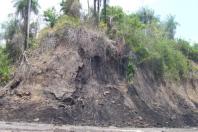Utah Tar Sands, Oil Shale Refinery Challenged
For Immediate Release, July 22, 2013
Contact: Taylor McKinnon, Grand Canyon Trust, (801) 300-2414
John Weisheit, Living Rivers, (435) 259-1063
David Garbett, Southern Utah Wilderness Alliance, (801) 486-3161
Bill Snape, Center for Biological Diversity, (202) 536-9351
Utah Tar Sands, Oil Shale Refinery Challenged
Green River Refinery Would Pollute Air,
Enable Dangerous Oil Shale, Tar Sands Mining in Colorado River Basin
SALT LAKE CITY— A coalition of conservation groups today filed a “request for agency action” challenging the Utah Department of Air Quality’s June 21 approval of a new oil refinery in Green River, Utah that would affect local and regional air quality and facilitate oil shale and tar sands mining in the Colorado River Basin’s Green River Formation.
The U.S. Geological Survey estimates that between 353 billion and 1.146 trillion barrels of oil in the Green River Formation “have a high potential for development,” which is 2 to 7 times as much as Alberta’s 170 billion barrels targeted by the Keystone XL pipeline.
“The public needs to understand that the Colorado River Basin’s carbon bomb dwarfs Alberta’s,” said Taylor McKinnon, director of energy with Grand Canyon Trust. “In addition to polluting Utah’s already-dirty air, this refinery is another step toward massive strip mining, greenhouse gas emissions and Colorado River drying.”
The groups are challenging the department’s June 21 issuance of a permit approving the plant over several alleged violations of the Utah Air Conservation Act. The challenge was submitted to the Utah Department of Environmental Quality and will be heard by an administrative law judge, and potentially later the Utah Supreme Court.
“To experience clean and crisp air in the Green River Desert today, you have to wait for an infrequent thunderstorm to sweep the haze, dust and smoke away,” said John Weisheit, conservation director with Living Rivers. “Only then can you actually see the features of the Book Cliffs, the San Rafael Swell, and the Henry and La Sal mountains.”
The refinery would emit volatile organic compounds, other hazardous pollutants and greenhouse gases while creating now-absent local capacity for processing up to 7 million barrels of heavy crude annually in the heart of Utah’s oil shale and tar sands country.
“People travel from all over the world to enjoy the stunning vistas at Arches and Canyonlands national parks as well as Dead Horse Point,” said David Garbett, a staff attorney with the Southern Utah Wilderness Alliance. “It makes no sense to risk compromising the remarkable views this region offers with visibility-reducing pollution from this refinery.”
Oil shale and tar sands development entails strip mining and dangerous energy and chemical inputs to melt and extract fuel. Greenhouse gas emissions stemming from oil shale and tar sands development far exceed that of conventional oil development. In March the Bureau of Land Management allocated more than 800,000 acres of federal public land in the Colorado River Basin to oil shale and tar sands development.
“Given all of Utah’s current pollution problems under the Clean Air Act, it makes no sense to further harm public health and exacerbate climate change,” said Bill Snape, senior counsel at the Center for Biological Diversity.
Groups filing today’s request for agency action are Grand Canyon Trust, Living Rivers, Southern Utah Wilderness Alliance and the Center for Biological Diversity.
To download a copy of today’s “request for agency action,” click here.
To download maps of the refinery and state and federal leasable oil shale and tar sands land, click here (high or low resolution) (for use in media).


